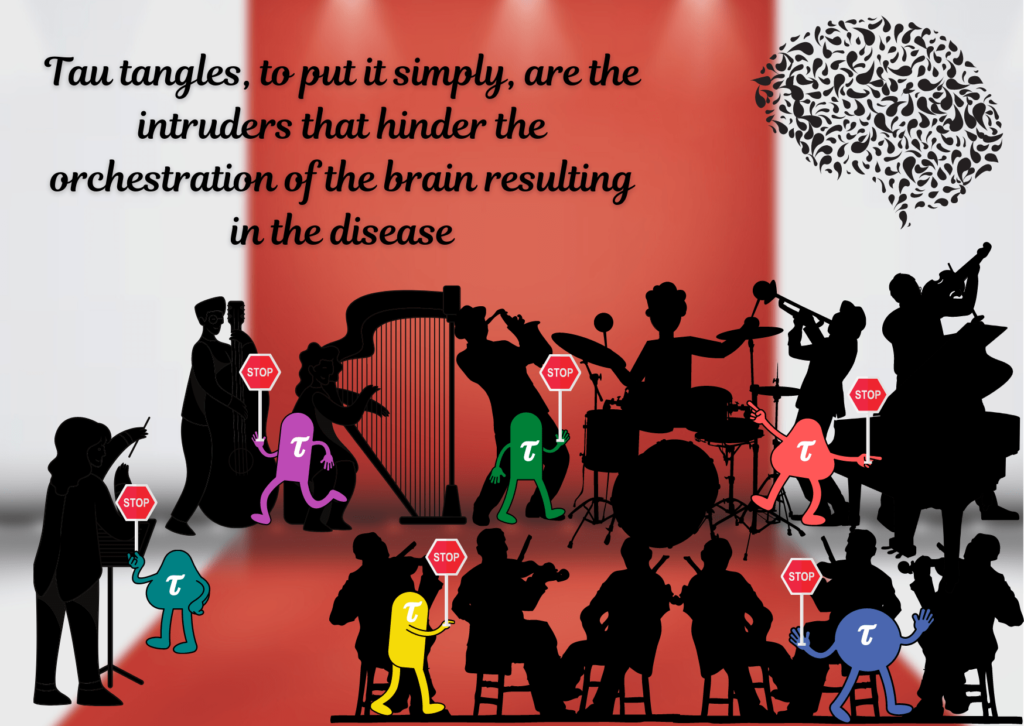“I am a brain, Watson. The rest of me is a mere appendix.” While we can all agree that our famous inhabitant of 221-B Baker Street is a fan of exaggeration, the sentiment is not entirely invalid. The same brain that forms the window to our senses and perception allows Sherlock to keenly observe and solve cases, play the violin, ponder over evidence and give Mrs. Hudson a hard time. But what happens when this complex instrument goes kaputt?

Neurochemistry and neurophysiology are an orchestra of many elements in the brain and the nervous system that sync together harmoniously. When a musician misses a note, it can lead to a cascade of mishaps that can spoil the symphony. Usually, the clinical symptoms of neurodegenerative diseases can be detected long after their onset, when the symphony is in ruins. However, by using novel methods, one can sense when a single note is missed, thereby managing the disease and salvaging the symphony to retain its melody.
The rise of the krise
Neurodegenerative diseases are on the rise thanks to many environmental, genetic, and epigenetic factors. Alzheimer’s, Parkinson’s, Huntington’s, ALS, and prion diseases are common manifestations. While the reasons and consequences might be different and complex in each disease, there seems to be a common theme to the story. In agreement with the orchestra metaphor, let’s explore why and how an orchestral performance may go wrong.
Intruders intervene
Alzheimer’s disease is characterized by the onset of dementia and impairment in cognitive ability. One of the main observed effects is the formation of tau tangles. Tau is a kind of protein that, on joining with a phosphate group, becomes phosphorylated. Tau tangles, to put it simply, are the intruders that hinder the orchestration of the brain resulting in the disease.

Maestro messes up
[1] Parkinson’s: It’s the most common motor disorder of the CNS. Tremors are a feature of the disease along with dyskinesia or impairment of movement. The feature of ‘Lewy bodies’ or misfolded and aggregated alpha-synuclein proteins that obstruct signalling is somewhat like wrong directions by the maestro that can cause a further error and imbalance and can result in the musicians going haywire.
Malfunctioning instruments
Amyotrophic lateral sclerosis or ALS: It is characterized by muscle atrophy, paralysis, and weakness. The brainstem and motor function are affected by misfolded proteins like superoxide dismutase-1 (SOD1). It is similar to a malfunctioning instrument that can lead to a series of missed notes creating a debacle.
Chain reaction
Prion diseases are characterized by the misfolding of protein (PrPsc). The most common way through which prions spread is through cell-cell contact or channelling. An analogy would be the “chain” in which an error by one instrumentalist causes the next one to err, thus propagating the error.
Since the cells follow a sequence that is specific and exact, like the orchestra and its notes, in one or all of the ways as stated above, the symphony goes wrong even due to a slight change. But there seems to be a common thread on a biochemical level — a perpetrator present in all these scenarios — EXOSOMES.
Exosome and its expression

It is said that the solution lies at the heart of the problem. This certainly seems to be true in the case of exosomes. Exosomes are the “runaways” of the cell, found to play a part in cell communication. Exosomes are known to help in the aggregation of protein in Alzheimer’s, lead to neuron loss in PD, cause dysfunction of TDP-43 in ALS, and help prions to successfully spread the disease.
However, recent findings suggest that exosomes may play a part in reversing the damage. Exosomes can contribute to neuroprotection, reversing protein aggregation, reducing amyloid beta protein in AD, hindering misfolding, and improving cell communication. The extent to which exosomes can be therapeutic is a matter of research.
Biomarkers
Perhaps, the most important role exosomes can play is to detect the onset of the disease at an early stage; to detect the missed note in time, to prevent further damage. Exosomes are vesicles that can cross the blood-brain barrier. And these runaways carry with them the contents of their environment. In other words, their “luggage” can help us determine the extent or presence of the disease. This is remarkable as it will ease the process of diagnosis and make it patient-friendly.
It is interesting how the perpetrator, in this case, can help solve the problem. This particular perpetrator certainly seems a lot more friendly than the ones Sherlock encounters.
References:
1) Pathology of Neurodegenerative Diseases Brittany N. Dugger1 and Dennis W. Dickson2 Cold Spring Harb Perspect Biol doi: 10.1101/cshperspect.a028035
2) Exosome-mediated therapeutic delivery: A new horizon for human neurodegenerative disorders’ treatment
(with a focus on siRNA delivery improvement) https://doi.org/10.1016/j.procbio.2019.06.025
3) Role of Exosomes in Central Nervous System Diseases https://doi.org/10.3389/fnmol.2019.00240
. . .
Writer

Maitreyee Upadhye
Maitreyee is a student of Pharmacy at AISSMS and aims to pursue research in Molecular Biology. She
hopes to combine her love for languages and Science to reach out to those who are less
privileged. Being an ardent Oprah devotee, her goal is to evolve to be the best version of herself.
She’s usually found around bookshelves and dogs.
Illustrators

Anushree Krishnamurthy
Co-Founder, Director of Website Development and Logistics

Urja Kuber
Co-Founder, Director of Website Development and Logistics

Yamini Kathuria
An amateur artist and an avid reader, currently pursuing a bachelor’s degree in Psychology at Delhi University. Intrigued by our experiences, from human consciousness to the complexity of nature, she wishes to work in an interdisciplinary area where cognitive science, psychology & neuroscience meet. Her love for connecting & sharing knowledge with others makes her feel happy & content, a reason to work for ‘The Science Paradox’ magazine.

